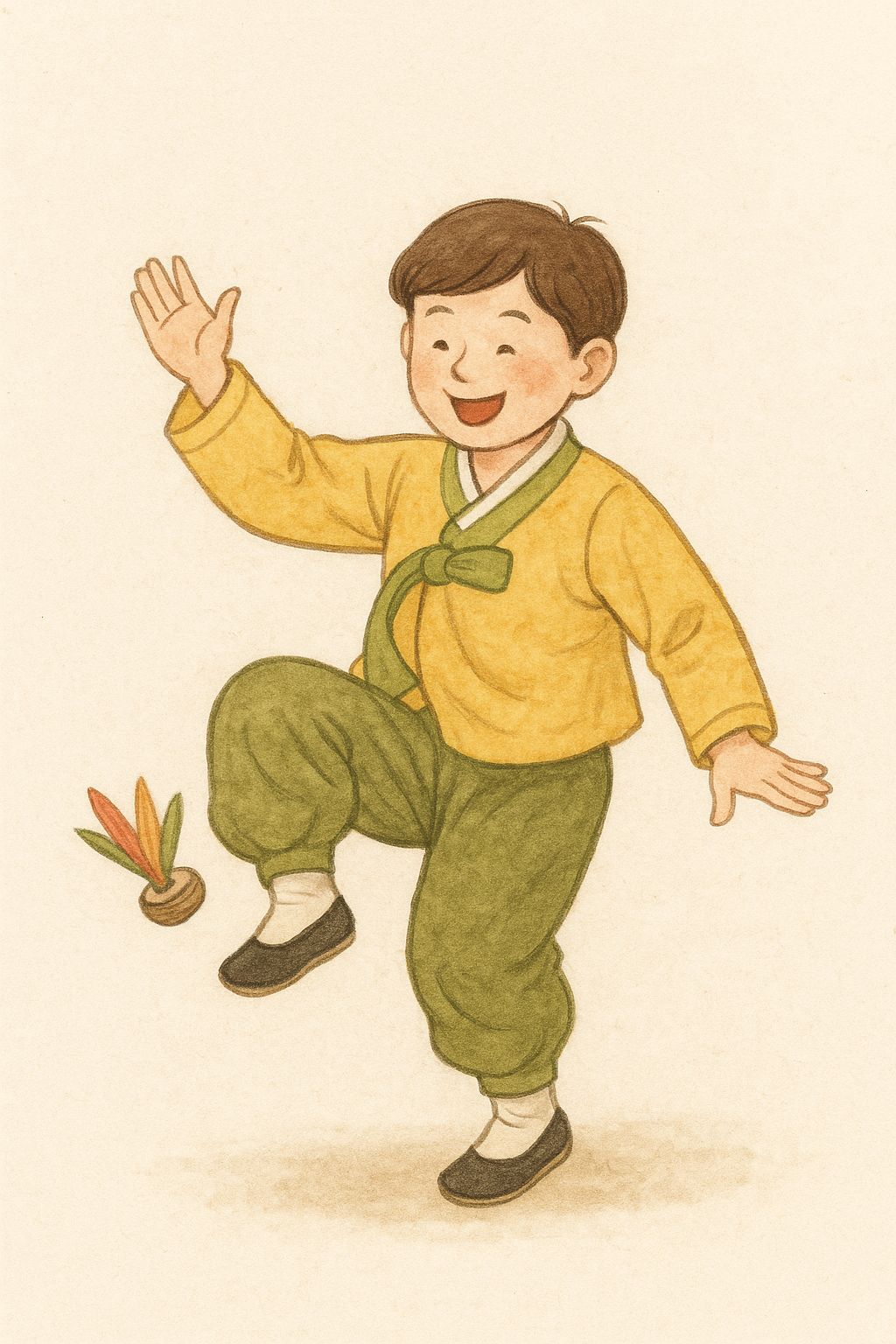🍂 Korean Traditional Game Series 2

Jegichagi
(제기차기 · Jegichagi)
🕰️ 1. The Game
Jegichagi is a vibrant traditional Korean outdoor game often played by children, especially during the winter season and holidays.
The game resembles the modern game of hacky sack, where players keep a small object called 'jegi' in the air by kicking it with their foot.
A jegi is usually made by wrapping coins or small weights in paper or cloth and attaching colorful strips of paper at the end, allowing it to float and spin in the air when kicked.
🪄 2. Rules & How to Play
- Players can play alone or in groups.
- The main rule is to keep the jegi from falling to the ground by continuously kicking it.
- The most common technique is to use the inside of the foot.
- In group play, players take turns, and the one who keeps the jegi up the longest wins.
- Sometimes, competitions are held to see who can kick it the most times without dropping it.
👀 3. Example from Life
During Seollal (Lunar New Year), children often gather outside in the cold winter air, laughing and challenging each other to Jegichagi.
It is more than just a game—it is a way to foster friendship, test agility, and create joyful memories.
🌏 4. Similar Games Around the World
- China: Jianzi, a shuttlecock-kicking game.
- Vietnam: Đá cầu, a popular kicking game using a shuttlecock.
- Western countries: Hacky sack, where players keep a small footbag in the air.
✨ Jegichagi demonstrates how playful traditions around the world share a common joy of movement and skill.
💌 Closing Words
Jegichagi is a simple yet meaningful game.
It brings children together, strengthens coordination, and fills the air with laughter.
Through this traditional play, we glimpse the beauty of Korean childhood culture.
📌 Note
This is a creative cultural content from the Misojieum Story Blog (kor-telling.com).
Please do not copy without permission.
Sharing is welcome with proper source citation.
'Korean Traditional Games' 카테고리의 다른 글
| Korean Traditional Game : Tuho (0) | 2025.10.07 |
|---|---|
| Korean Traditional Game : Ganggangsullae (0) | 2025.10.06 |
| Korean Traditional Game : Juldarigi (0) | 2025.10.05 |
| Korean Traditional Game : Ssireum (0) | 2025.10.05 |
| Korean Traditional Game : Gulleongsoe Gguligi (0) | 2025.10.04 |
| Korean Traditional Game : Paengi Chigi (0) | 2025.10.04 |
| Korean Traditional Game : Neolttwigi (0) | 2025.10.03 |
| Korean Traditional Game : Yutnori (0) | 2025.10.01 |